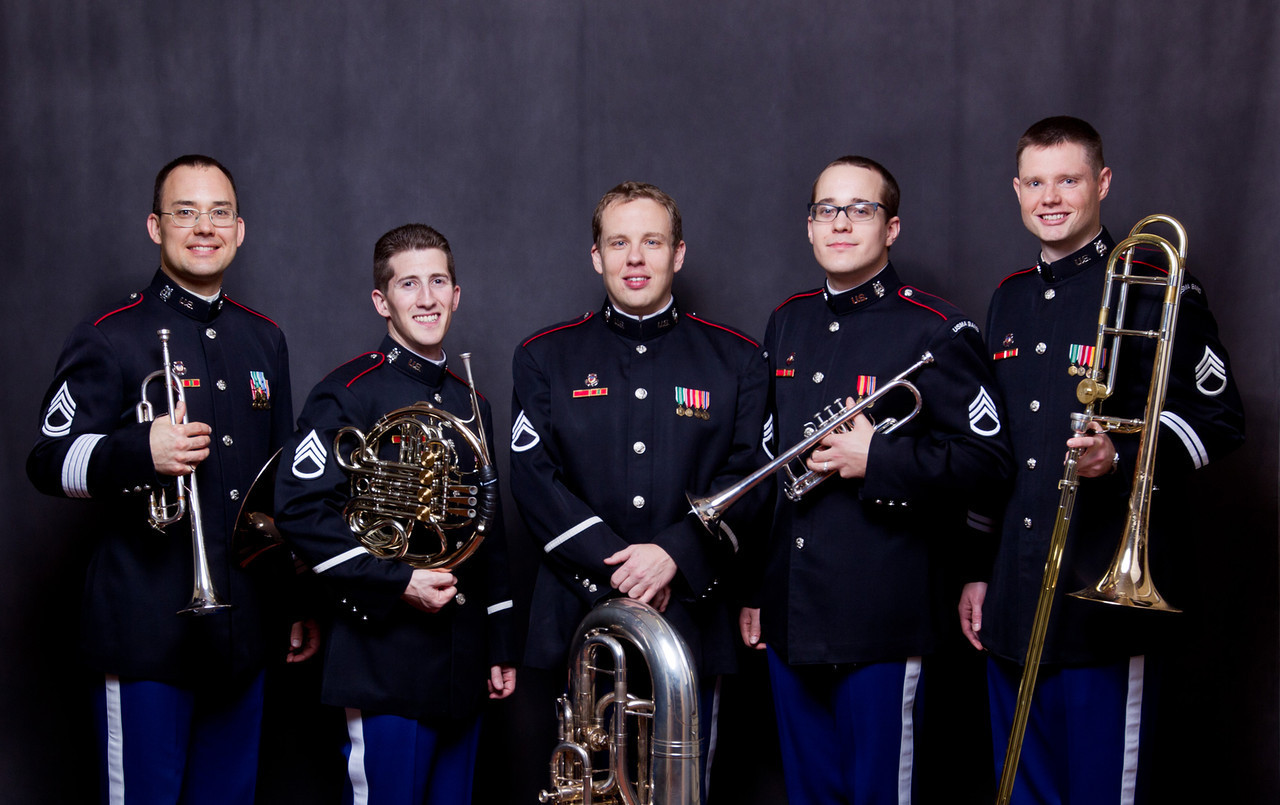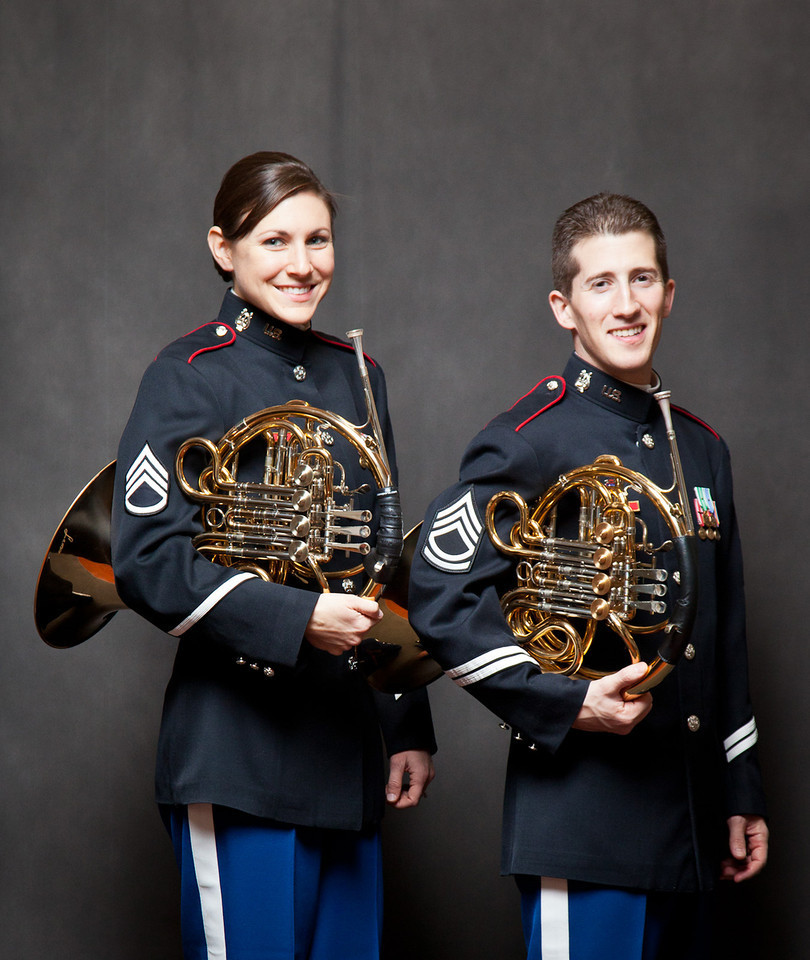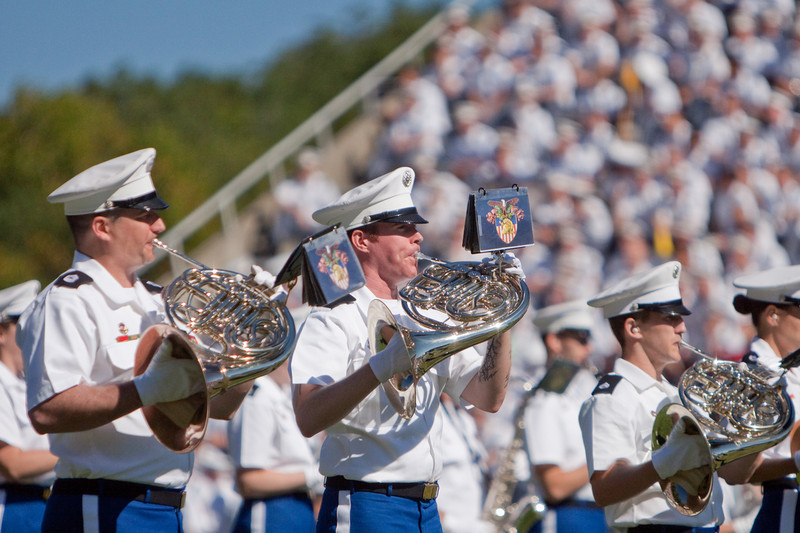When I first joined the West Point Band in 2004 as a clarinetist, the friendly advice I often received was that there were only two crucial things to remember: show up on time and know which uniform to wear. Initially, I thought it was a joke, but I soon realized the profound truth in it, especially concerning uniforms. Behind the scenes, being a military musician involves far more uniform-related questions than musical anxieties. Queries like, “Does anyone have spare medals?” “Are we wearing white or blue pants?” or “Where’s my belt?!” are commonplace. My most nerve-wracking moments weren’t on stage performing, but rather those frantic seconds spent untangling white cords on my marching uniform before formation or the sheer panic of almost reaching the parade field and realizing I’d forgotten my white gloves.
Uniforms hold immense significance in the military. They foster unit cohesion, distinguish us from other branches, nations, and even units. Beyond their impressive appearance, the various insignia, medals, patches, and stripes narrate the story of our military careers. When we perform for the public, the questions we receive about our uniforms almost outweigh those about our music.
For daily duties and rehearsals, we wear standard Army uniforms – typically ACUs or ASU Class B’s. However, performances call for a diverse array of uniform components, meticulously combined to create our formal concert and marching attire. These distinctive uniforms are unique to the West Point Band, evolving over our nearly 200-year history into what you see today.
Our Concert Blue and Full Dress Blue uniforms, showcased below, are designed to mirror the cadet marching uniforms and have largely maintained their current form since 1902.
Concert Blue Uniform: The Signature Look
The Concert Blue uniform is arguably the most recognizable, frequently worn for seated performances and concerts. It features a dark blue, high-collar coat adorned with medals, paired with blue trousers. In concert settings, female members have the option of a long blue skirt. This uniform also serves for marching funerals and occasional outdoor ceremonies, supplemented with white gloves and a flat blue hat. (Skirts are, understandably, not suitable for marching.) The high-collar coat is the most defining element, displaying the “USMA Band” patch on the shoulder. The deep blue represents “Army Blue,” while the red piping is a historical nod to the red accents of the Continental Army uniforms.
 The Academy Brass Quintet in Concert Blue uniforms showcasing the iconic high collar design and medal placements.
The Academy Brass Quintet in Concert Blue uniforms showcasing the iconic high collar design and medal placements.
Decoding the Insignia: Stripes, Patches, and Medals on the High Collar Coat
We often get inquiries about the meaning behind the stripes, patches, and medals on our high-collar coats. The white stripes on the sleeves, near the cuffs, are service stripes. Each stripe symbolizes three years of service. Therefore, no stripes indicate less than three years of service, while numerous stripes extending up the arm signify a long tenure with the band. Near the elbow, a patch displays the wearer’s rank. West Point Band members are all Non-Commissioned Officers (NCOs), except for our conductors who are officers (rank displayed on their shoulders), ranging from E-6 (Staff Sergeant) to E-9 (Sergeant Major).
The medals on the left side of the uniform include two unit awards, positioned below the Adjutant General Regimental Crest above. The AG crest signifies the band’s affiliation with the U.S. Army Adjutant General Corps, a branch established in 1775.
The red ribbon represents the Meritorious Unit Commendation, awarded to the West Point Band in 1946 for exceptional performance, notably during the FDR Funeral on April 15, 1946.
The red and green ribbon is the Army Superior Unit Award, bestowed upon every unit at West Point in June 2010, recognizing the academy’s national accolades as “The Best College in America” by Forbes magazine and “The Top Public Liberal Arts College” by U.S. News and World Report.
 A detailed view of the Concert Blue uniform highlighting the medals, service stripes, and rank patch on the sleeve.
A detailed view of the Concert Blue uniform highlighting the medals, service stripes, and rank patch on the sleeve.
On the right side, individual service awards and personal decorations are displayed, highlighting significant achievements in a service member’s career. All band members wear the National Defense Service Medal (red and yellow) and the Global War on Terrorism Service Medal (blue). The National Defense Service Medal is awarded for honorable service during periods of “national emergency,” including the Korean War, Vietnam War, Operations Desert Shield and Desert Storm, and the Global War on Terrorism. The Global War on Terrorism Medal recognizes service during the War on Terror, from September 11, 2001, onwards. Other medals vary based on individual accomplishments. For a comprehensive list of Army awards and decorations, click here.
Sierra Uniform: Warm Weather Comfort
The Sierra uniform is designed for warm weather performances, both in concert and marching settings, and sometimes for football games. While perhaps not the most stylish, it offers significant relief in hot weather with its short sleeves, a welcome change from the high-collar coat. The Sierra uniform consists of a white, short-sleeved button-down shirt, black belt, and blue pants. The shirt resembles the Class B duty shirt, featuring a nametag and white shoulder boards indicating rank (instead of gold). Unlike the Class B shirt, medals are also worn on the Sierra shirt. The headgear for this uniform is a flat white hat. We typically wear this uniform for summer outdoor concerts and warm-weather military reviews.
 The West Point Band performing in Sierra uniforms at Michie Stadium, demonstrating the practicality and smart look of the warm weather attire.
The West Point Band performing in Sierra uniforms at Michie Stadium, demonstrating the practicality and smart look of the warm weather attire.
Full Dress Blue Uniform: Ornate and Intricate
The Full Dress Blue uniform is the most elaborate and time-consuming to assemble. Even seasoned band members sometimes need a refresher when parade season arrives. It starts with the high-collar coat (without medals), worn over blue OR white pants.
Medals are omitted from the high-collar coat to accommodate the black wool pouch over the right shoulder, braided white cords, and a white belt. White gloves and a hat affectionately known as the “tar bucket” complete the ensemble. The “tar bucket” features the USMA crest and a tall black plume. The Full Dress Blue uniform is reserved for reviews and occasionally football games. However, the “tar bucket” is typically saved for marching onto the field, with the more practical flat blue hat worn in the stands.
 The Full Dress Blue uniform paired with blue pants, showcasing its detailed components including cords, belt, and distinctive pouch.
The Full Dress Blue uniform paired with blue pants, showcasing its detailed components including cords, belt, and distinctive pouch.
Uniform Selection: Matching the Occasion and Weather
For our own events, like concerts, we generally choose the Concert Blue uniform for indoor venues and the Sierra uniform for outdoor settings. In ceremonies and events where the band plays a supporting role, we typically align our uniform with the prevailing dress code. For formal events where participants wear the Class A uniform, we will wear our Concert Blue uniform. For ceremonies in ACUs, we also wear ACUs. For events involving cadets, such as reviews and football games, we mirror the cadets’ uniforms. Reviews and football game marching shows usually call for either Full Dress Blue or Sierras.
Weather is a factor in uniform selection, although certain events dictate specific uniforms regardless of conditions. Full military funerals, for example, are always performed in Concert Blue, irrespective of temperature. (We do have overcoats and cold-weather gear for lower temperatures, but in the heat, we rely on Army resilience!).
It’s often said that audiences “hear with their eyes,” and we experience this firsthand constantly. Impressions are formed based on our uniforms even before a note is played. We are proud to serve in the uniforms of the United States Army, and hopefully, this overview provides a deeper understanding of the West Point Band uniforms.
Words by Staff Sgt. Erin Beaver
Images by Staff Sgt. Torin Olsen

